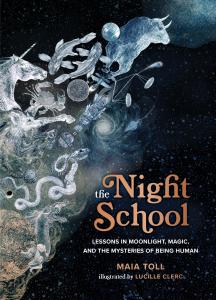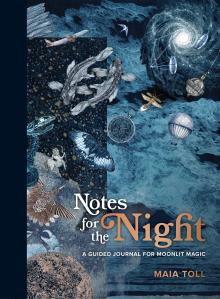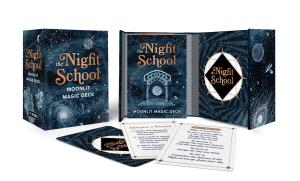The Night School’s New Student Orientation
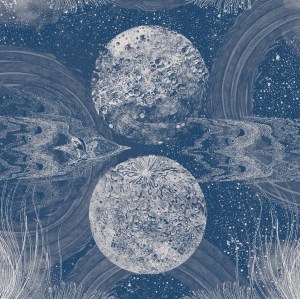
Welcome to The Night School, Firefly! In her newest book arriving this August, author Maia Toll introduces Bea Marlowe, your magical arts professor who shares her wisdom in mystical subjects like astrology, divination, alchemy, and self-exploration. We hope you enjoy this exclusive excerpt of the “New Student Orientation” from The Night School: Lessons in Moonlight, Magic, and the Mysteries of Being Human.
For more exclusive sneak peeks into the world of The Night School – including a glimpse into the Moonlit Magic Deck and our favorite journal prompt from Notes for the Night – sign up for our RP Mystic newsletter!
By clicking ‘Sign Up,’ I acknowledge that I have read and agree to Hachette Book Group’s Privacy Policy and Terms of Use
NOW, LET’S STEP INTO THE NIGHT
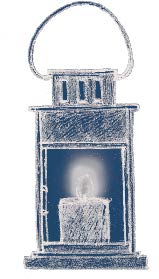 What do you see when you step into the Night, Firefly? When the light of the sun is removed, what remains? Are the trees in your yard limned in silver? Is your garden made of moonbeams? Are cars racing down the roads like shooting stars? Soften your gaze and let the magic in.
What do you see when you step into the Night, Firefly? When the light of the sun is removed, what remains? Are the trees in your yard limned in silver? Is your garden made of moonbeams? Are cars racing down the roads like shooting stars? Soften your gaze and let the magic in.
As I sit in my office typing this, the new moon has risen, a small dot in the upper corner of my office window, a barely seen portal against the dark sky. My tea has long since gone cold, but before I make a fresh pot, I want to get these words down for you. They are Night words and they crave this velvety void, the freshness that comes in the wake of a New Moon. They whisper both wake up and dream.
But before we slide into the Night’s enigmatic embrace, let’s revisit the basics:
The Night encompasses, on average, between eight and 12 hours of every 24-hour period. The exact length of the Night will vary, of course, depending on the time of year and where, exactly, you live on this ever- rotating sky sphere. What remains consistent is the simple fact that, during the midnight hours when the outer world retreats and the inner world awakes, most of us are, quite literally, unconscious. Bringing conscious- ness to these inward hours, and watering the magic and mystery that bloom there, is the work of the mystic and the purpose of the Night School.
Once you activate your Night-sight, you’ll be able to use it by the light of day, but it is infinitely easier to step into the mysteries for the first time during the hours of darkness. The Night cradles your secrets, keeping them safe like treasured wool sweaters in a cedar trunk, then it gently unfolds them for you to try on. (The day forgets to be sweet and soothing: it will accost you with your own truths and want you to thank it for the bruises of enlightenment.)
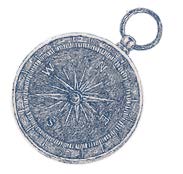
So pull a blanket round your shoulders and let your daylight world fall away. See if you can remember who you are and who you want to be. Refinding life’s magic is our journey for the next two semesters, and this is our quiet time together before we begin; our time to let the Night soften us so we can slip sideways through its portals and learn something unexpected and potent.
We begin with getting to know the Night. Not the words the night or the concept of “the night,” but the actual sueded darkness of Night. The one that exists right outside your door, Firefly.
Finish your cocoa and grab your coat. It’s time to go outside (yes, even if it’s chilly): to begin to step into the Night you need to stand under the starlight and breathe it in.
Slowly unleash your senses:
Focus on your sense of sight. Observe the Night’s landscape without judgment, noticing what you see and what you don’t. What stands out to you? (And what doesn’t?) What (or who) catches your attention? How do familiar things look once they are shrouded in darkness?
What does the Night sound like? Focus less on cars driving by or your neighbor’s dog barking and more on what exists in the sliver of starlight in between . . . Try opening your eyes and closing them. Does this change what you hear? If the Night were a song, what song would it be? Do you hear creatures? Are they on the ground? In the sky? In a tree? Can you tell just based on what you hear, or is sound itself fluid and strange in the blackness of Night?
How does the Night feel on your skin? Is it a blanket or a butterfly kiss? Is the Night air humid, playful, sensuous, chilly?
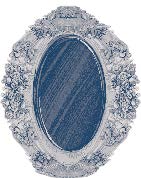
Now use your nose. What do you smell standing under the Night sky? (Is it strange to be sniffing the Night? How does it feel for you, Firefly?)
Open your mouth and taste the Night. Yes, it will feel . . . unusual. Do it anyway. Let the Night wrap around your tongue so you can savor the notes of menthol and mystery.
Finally, open yourself fully to the Night, allowing all your senses to sing simultaneously. Like a crisp apple, there is sweetness and crunch, a cool tartness, a breaking of the skin. Breathe into it. Gently notice how your Nighttime knowings differ from the knowings of your daytime self.
Now, return to the cosmic question: Who are you in the Night?
Your Night-self is the mirror image of your daylight self; it exists in balance, as necessary in forming who you are as the very oxygen you breathe. Light cannot exist without dark and we, too, must have this balance within us to be whole. Getting to know the shimmer of your Night-persona, with her inner gaze and outer knowing, is vital in the original sense of the word: it brings vita, life.
In your heart, reach out to the Night. Ask what it has to share with you. Pay careful, but soft, attention to its reply. Practice observing and noticing. Remember, you’re not deciding whether
 these noticings are good or bad, you’re just letting them land like snowflakes on your winter mittens.
these noticings are good or bad, you’re just letting them land like snowflakes on your winter mittens.
When you’re ready, head back indoors. Make yourself a fresh cup of something soothing. I have a little homework for you before you head off to dreaming.
And, yes, Firefly, you need sleep and dreams. While the Night cracks open your mind and heart in ways the day does not, while it brings with it whispers of magic and mystery, it is also meant to be a time for rest. Through your Night School studies you’ll learn to open your consciousness to these subconscious hours, but that doesn’t mean your studies should make you disregard your circadian rhythms. Recent studies have shown that your brain detoxes while you’re sleeping, so keep your mind clean and be sure to get some zzz’s.
But before you turn the lights out, let’s have some fun!
Homework
Get into school mode with your very first homework assignment.
Ready to wade in?
(Don’t worry: the water’s warm, scented with night-blooming jasmine, and dappled with starlight.)
Night Haiku
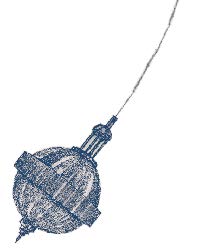
Gather your observations from your time outdoors so you can write a Night Haiku. You may remember from literature classes that a haiku is a type of short-form poem only three lines long, which originated in 13th-century Japan. They’re often about nature, so an ode to Nighttime is fairly traditional fodder.
Start by thinking of a few words you can use to describe the smelled, tasted, and heard sensations of the Night.
Sometimes it’s hard to match language to sensation, and the relation- ship between words and feelings can be tenuous. Let this space between lived experience and language feel like freedom—the perfect excuse to string your words together in unexpected ways in order to create unexplored meanings. Words that would never sit side by side during the day are perfectly comfortable cohabitating during the Night:
poke and perfection
mercury and miasma
needle and dreams
Remember, a haiku is three lines long. And although the lines don’t need to rhyme, you do have to count the syllables:
Five for the first line
Seven for the second
Five for the third.
So a haiku looks like this:
Into the falling
needles of Night, perfect stars
poke holes in the dark.
Or
Hush, green frog burping
In the miasma. Owl
ruin your dreaming.
Or even
Mercury rose fast,
a flaming needle, streaking
through velvet sky dreams.
Your turn, Firefly.
Write a haiku or two describing the Night, then inscribe your verse, as well as notes on your observations from your trip outside, in your journal. Easy-peasy.
Delve into the mysteries of the Night -- from divination and astrology to ancient philosophy and self-exploration -- in The Night School, a magical course of study for modern witches, seekers, and mystics, from award-winning author and healer Maia Toll.
Explore the mysteries of the Night -- from questions of ancient philosophy to the magical properties of the Elements -- and the witch within in Notes for the Night, a guided journal and modern Book of Shadows from award-winning author and healer Maia Toll.
Explore the magic and mystery of the Night with this mini deck, featuring magical concepts, mantras, rituals, and more, from award-winning author Maia Toll's The Night School.





